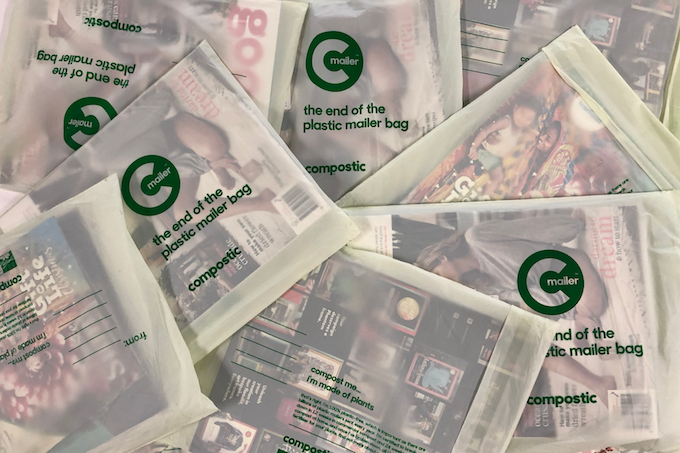New Zealand publishers team up with Compostic to sustainably wrap magazines

However, it wasn’t a complete oversight by National Geographic as copies of the magazine delivered to subscribers in the US, UK and India were in paper packaging.
That change is set to stay and it will save more than 2.5 million single-use plastic bags each month said Susan Goldberg, editor in chief, in the announcement. On top of that, National Geographic has challenged its international partners to get rid of plastic wrappers by the end of 2019.
“We’re committed to having an impact on this crisis, we’re launching a global campaign. Under the campaign banner of Planet or Plastic? we’ll deploy content across all our platforms to raise awareness and encourage consumers to act,” said Goldberg.
Closer to home, ICG Media titles Good, NZ Retail, Idealog and NZ Marketing are now being delivered in a compostable wrap by Compostic.
The material is plant-based and printed with soy and water-based inks allowing the whole bag to break down in composting conditions. It takes 12 weeks in commercial compost and 24 weeks in compost at home.
And while it looks and acts like a plastic bag, it feels different, which Jon Reed, director of Compostic, says makes users aware there is something different.
Specific details about its plastic-free nature and ability to breakdown are printed on the back.
Reed explains Compostic started with bags after identifying a goal to replace plastic bags but as it’s progressed, it’s found many other ways to use the material and reduce plastic.
One of those was its courier bags that are now being used as magazine wraps.
The move started when Good magazine editor Carolyn Enting learned about Compostic’s material and thought about how good it would be to swap-out plastic for an environmentally-friendly alternative.
And it’s not a solution she wants solely for Good – she wants to see other magazines get on board.
“I thought ‘wouldn’t it be amazing if we could introduce all magazines to this product’, then collectively we could make a difference.”
“The latest issue of Good was delivered to subscribers in a Compostic compostable mailer and we’re getting loads of feedback from readers on social media and via email applauding the move.”

While there have been some logistical and cost challenges to work through – with Compostic more expensive than traditional plastic wrap – the positive feedback brands like Good are getting makes the investment worth it, Reed says. People are getting behind the brands making sustainable changes, he says.
“It’s something that’s in the spotlight at the moment which is a great opportunity for businesses to capitalise on whilst serving the environment. It’s a win-win.”
Compostic will be able to wrap any mailout product and over the next year, will be releasing household products and continuing its work with brands wanting to swap-out their plastic packaging.
“There are things we can do and some things we can’t, but we’re learning fast and hoping to work on more projects of a similar mould in future,” says Reed.
In August, Bauer Media also announced it was investigating a sustainable alternative to its plastic wrap. On Noted, it shared a story expressing its support of the government’s proposed mandatory phase-out of single-use plastic shopping bags and encouraged readers to recycle their magazine packaging.
That recycling, it said can be done through Love NZ Soft Plastic Recycling bins located In shops and supermarkets around New Zealand.




